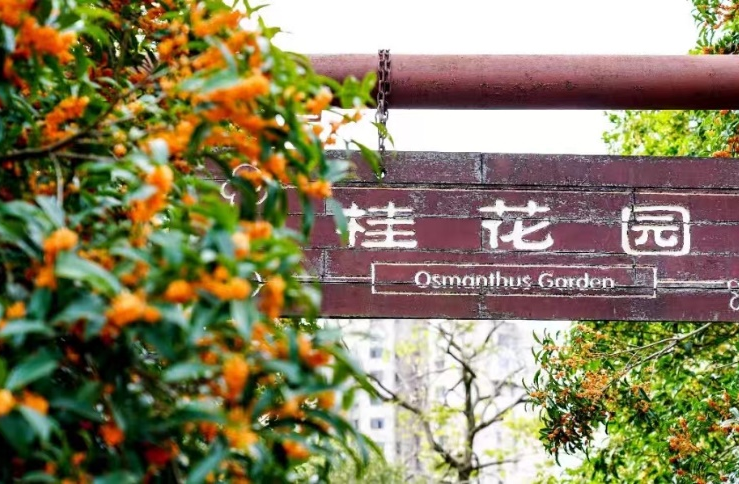A culinary journey through osmanthus-infused delicacies

With the arrival of autumn, the streets of Shanghai have been graced by blooming osmanthus flowers. It takes just a few osmanthus trees to fill nearby streets and alleys with the sweet scent of the season.
Here is a collection of local delicacies that feature the delightful flavor of osmanthus flowers.

Osmanthus syrup
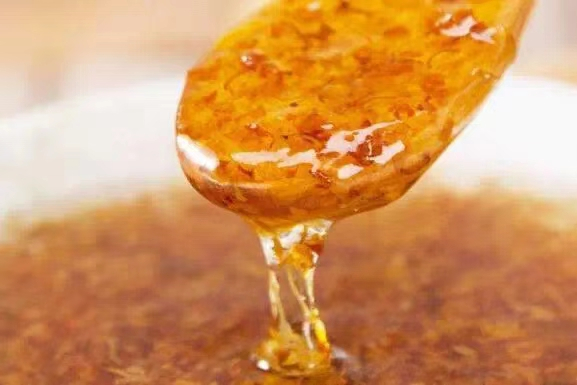
Making osmanthus sugar is one of the simplest ways to enjoy the flower's sweet aroma. This is how it is made: Spread a white cloth over a table, scatter osmanthus flowers on top, and use a needle to remove the stems and impurities. Soak the flowers in concentrated salt water for over 20 hours, then dry them in the shade. Mix the dried flowers with sugar - there should be more sugar than osmanthus. Stir well, then simmer over low heat until the sugar dissolves. Remove from heat.

Steamed lotus root stuffed with sweet sticky rice

This is a traditional dessert popular in the Jiangnan region, known for its sweet, crisp texture and strong osmanthus fragrance. Sticky rice is stuffed into the lotus root and simmered with osmanthus and brown sugar. After hours of cooking, the once white and crisp autumn lotus root becomes soft and tender, with the fragrant sticky rice blending perfectly into its core. The result is a sticky, sweet dish with a refreshing osmanthus aroma.

Osmanthus sweet taro
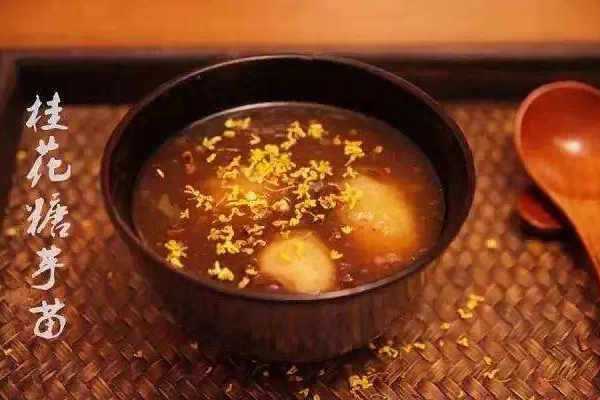
The osmanthus sweet taro is a delicacy popular in Nanjing. Around the Mid-Autumn Festival, the streets of Nanjing are filled with the light fragrance of osmanthus, just as taro is in season.
The freshly made osmanthus sugar taro gives off a sweet aroma that lingers, making it impossible to resist.

Osmanthus sweet soup with gorgon seeds

The easiest way to prepare this dish is to quickly blanch gorgon seeds in boiling water for three minutes, then add a bit of sugar and dried osmanthus.
When you take a bite, the texture is both smooth and tender, with a fragrant taste that refreshes the palate.

Glutinous rice ball in sweet rice wine
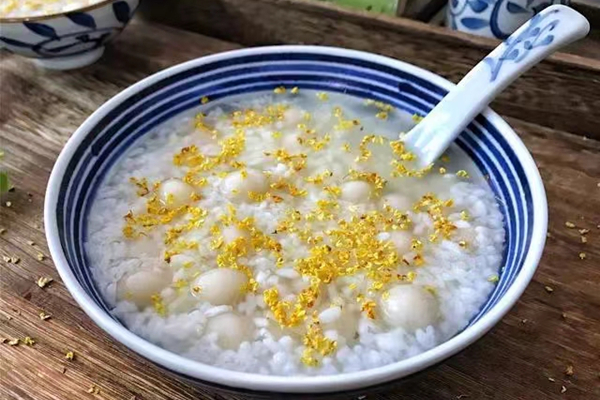
This is another classic snack in the Jiangnan region. The preparation is simple: cooking rice wine, egg, and small glutinous rice balls together.
In autumn, this common snack is infused with the flavor of osmanthus flowers. The osmanthus fragrance blends seamlessly with the glutinous rice balls, its subtle aroma weaving through the egg flowers and clinging to the rice balls before melting into the sweet rice wine.

Osmanthus cake
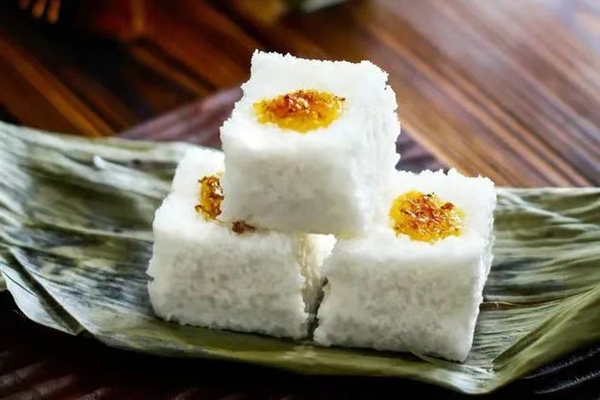
Every year when the osmanthus blooms, the time is right for making osmanthus cakes. With a history of over 300 years, osmanthus cake is made from glutinous rice flour, sugar, and honeyed osmanthus. The cakes are visually appealing with distinct yellow and white layers. They are soft and moist, with a delicate sweetness and a lingering aroma.

Osmanthus glutinous rice roll

Osmanthus glutinous rice roll is one of the most popular snacks among Shanghai locals. The dessert is made from glutinous rice flour and filled with sweet red bean paste. Topped with golden osmanthus flowers, its translucent skin reveals the red bean filling. With one bite, the roll is soft, chewy, and fragrant, offering a perfect balance of sweetness, flavor, and texture.

Osmanthus wine
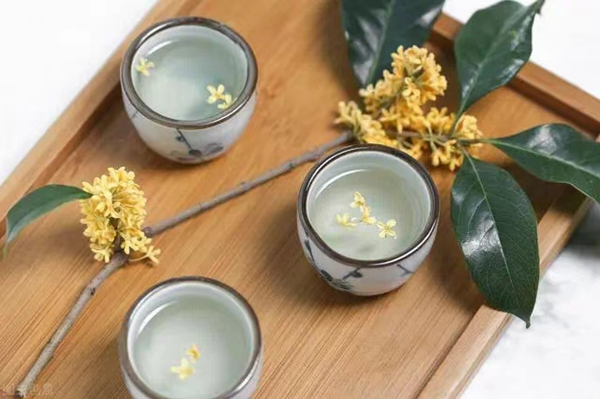
Because osmanthus has a short blooming period, some people preserve its fragrance by making osmanthus wine. The production process is simple: place osmanthus flowers in a bottle, add white wine and rock sugar, seal the bottle and store for about three months. With a rich amber color, the wine is sweet and smooth, complemented by a distinct osmanthus aroma.

Osmanthus chestnuts

There are two types of osmanthus chestnuts: one is natural, formed by interplanting osmanthus and chestnut trees, and the other is artificially flavored by adding osmanthus sugar when frying chestnuts.
Naturally grown osmanthus chestnuts are rare. In modern history, the most famous place producing the delicacy was Huishan district in Wuxi city, Jiangsu province. Unfortunately, it is believed that natural osmanthus chestnuts are now extinct, leaving many gourmets to lament their loss.
Sources: WeChat account of Shanghai Municipal Working Committee on Women at "shanghaifulian", WeChat account of Baoshan District Government at "sh-baoshan", WeChat account of Information Office of Qingpu District Government at "sh-baoshan"
